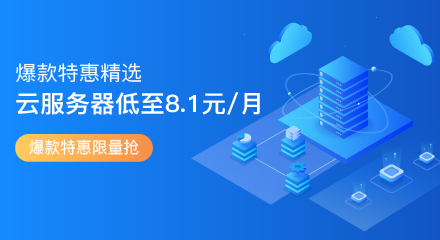ehcache是比较流行的本地缓存框架,当然你也可以让他成为分布式的,但是我们用的最多的还是他的本地内存缓存。示例实现了:如何使用注解,xml配置属性解释。
整体项目

pom配置
<dependency>
<groupId>org.springframework.boot</groupId>
<artifactId>spring-boot-starter-web</artifactId>
</dependency>
<dependency>
<groupId>org.springframework.boot</groupId>
<artifactId>spring-boot-starter-cache</artifactId>
</dependency>
<dependency>
<groupId>org.mybatis.spring.boot</groupId>
<artifactId>mybatis-spring-boot-starter</artifactId>
<version>1.3.2</version>
</dependency>
核心代码
EhcacheConfig:缓存配置类
package com.cimu.ehcache.config;
import org.springframework.boot.autoconfigure.cache.CacheManagerCustomizer;
import org.springframework.cache.concurrent.ConcurrentMapCacheManager;
import org.springframework.context.annotation.Bean;
import org.springframework.context.annotation.Configuration;
/**
* Title: EhcacheConfig * Copyright: Copyright (c) 2017 * * date 2018年12月19日 17:10 */@Configuration
public class EhcacheConfig {
@Bean
public CacheManagerCustomizer cacheManagerCustomizer() {
return new CacheManagerCustomizer() {
@Override
public void customize(ConcurrentMapCacheManager cacheManager) {
cacheManager.setAllowNullValues(false);
}
};
}
}
UserServiceImpl:用户实现类
@Service
@CacheConfig(cacheNames="demo")
public class UserServiceImpl implements UserService {
@Autowired
private UserDao userDao;
@Cacheable(value="demo")
@Override
public List getByAll() {
return userDao.getByAll();
}
@CacheEvict(value="demo",allEntries = true)
@Override
public void update() {
}
}
@Cacheable:在方法上使用注解,对该方法返回的数据进行缓存。先去缓存里面查是否存在,如果不存在再去数据库里查询。
@CacheEvict:清除缓存,value可以指定多个值,allEntries表示是否所有对象都清除,默认是false,如果要清除所有的数据,设置为true。
@CachePut:每次都去更新缓存。
@Caching:可以设置多个Cacheable,CacheEvict,CachePut。
在ChapterEhcacheApplication类上加上@EnableCaching注解。
配置
application.properties
spring.datasource.type=com.zaxxer.hikari.HikariDataSource
spring.datasource.url= jdbc:mysql://127.0.0.1:3306/test?useUnicode=true&useJDBCCompliantTimezoneShift=true&useLegacyDatetimeCode=false&serverTimezone=Asia/Shanghai
spring.datasource.username=root
spring.datasource.password=
spring.datasource.driver-class-name = com.mysql.jdbc.Driver
mybatis.typeAliasesPackage=com.cimu.ehcache.entity
mybatis.mapperLocations=classpath:mapper/*.xml
spring.cache.ehcache.config=ehcache.xml
ehcache.xml
<?xml version="1.0" encoding="UTF-8"?>
<ehcache updateCheck="false" name="defaultCache">
<!-- 指定一个文件目录,当EhCache把数据写到硬盘上时,将把数据写到这个文件目录下 -->
<diskStore path="./temp"/>
<!-- 设定缓存的默认数据过期策略 -->
<defaultCache maxElementsInMemory="1000" diskPersistent="true" clearOnFlush="false"
eternal="true" timeToIdleSeconds="10" timeToLiveSeconds="10"
overflowToDisk="true"/>
<cache name="demo" maxElementsInMemory="1" diskPersistent="true" clearOnFlush="false"
eternal="true" timeToIdleSeconds="10" timeToLiveSeconds="10"
overflowToDisk="true"/>
<!-- eternal=true //缓存永久有效,false相反 -->
<!-- maxElementsInMemory 缓存的最大数目 -->
<!-- overflowToDisk 内存不足时,是否启用磁盘缓存,如果为true则表示启动磁盘来存储,如果为false则表示不启动磁盘 -->
<!-- diskPersistent 是否在磁盘上持久化。指重启jvm后,数据是否有效。默认为false。 -->
<!-- timeToIdleSeconds 当缓存的内容闲置多少时间销毁 -->
<!-- timeToLiveSeconds 当缓存存活多少时间销毁(单位是秒,如果我们想设置2分钟的缓存存活时间,那么这个值我们需要设置120) -->
<!-- memoryStoreEvictionPolicy 自动销毁策略 可以配置为LRU(Least Recently Used 最近最少使用)、LFU(Less Frequently Used最不常用的)、FIFO(first in first out先进先出) -->
<!-- diskExpiryThreadIntervalSeconds 磁盘缓存的清理线程运行间隔,默认是120秒 -->
<!-- maxElementsOnDisk 磁盘缓存中最多可以存放的元素数量,0表示无穷大 -->
<!-- clearOnFlush:内存数量最大时是否清除。 -->
<!-- maxEntriesLocalHeap 是用来限制当前缓存在堆内存上所能保存的最大元素数量的。 -->
</ehcache>
其他的是mybatis的配置。这里就不列出来了
本文为博主原创文章,未经博主允许不得转载。
更多内容请访问:IT源点
注意:本文归作者所有,未经作者允许,不得转载


